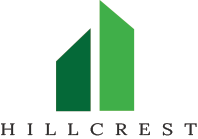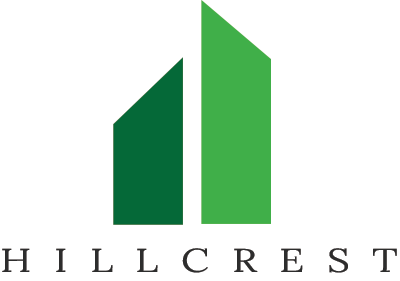Effective HOA communication is imperative to keeping homeowners informed, engaged, and satisfied. Board members should prioritize clear communication to build strong relationships and communities. This also helps reduce misunderstandings. With the right tools, homeowners associations can uphold transparency and foster trust.
The Importance of Clear HOA Communication
Communication plays a crucial role in maintaining a well-run homeowners association. Homeowners need updates on meetings, rule changes, and maintenance schedules. Poor communication can lead to a host of problems. With clear messaging, board members can help build confidence in their leadership.
Miscommunication can cause unnecessary conflict between homeowners and the board. For example, a homeowner who does not receive proper notice about a rule change may unintentionally violate a new policy. This will then result in penalties and complaints. To prevent these issues, HOAs must ensure all residents receive clear information in an accurate and timely manner.
Additionally, proper communication can help HOAs comply with legal requirements. Some states, including Illinois, mandate that HOAs should send specific notices by certified mail or public postings. Compliance with these laws will help protect the association and its board from potential liability.
The Best HOA Communication Tools to Use
Effective communication is a key component of success for any homeowners association, but some HOA boards don’t know where to begin. There are plenty of methods an HOA can take advantage of. Here are the best HOA communication tools available.
1. Email
Email offers a quick and efficient way to send updates. Boards can share meeting reminders, policy changes, and financial reports. Email records also provide a history of correspondence, leaving a trail of documentation. Of course, board members should keep the homeowners’ contact lists up to date regularly.
One of the biggest advantages of email is the ability to send mass communications instantly. Associations can also automate email newsletters, ensuring homeowners receive consistent updates without manual effort from board members. That said, HOAS needs to monitor email open rates and request confirmation for urgent messages. This ensures that homeowners read the emails.
2. Newsletters
Newsletters keep homeowners informed about events, projects, and community news. An HOA can offer either digital or printed newsletters, with some even offering both. With a good newsletter, homeowners can stay involved and engaged in HOA activities. Of course, consistency is paramount here, so the HOA should choose to send newsletters on a monthly or quarterly basis.
3. Certified Mail
Depending on state laws and the governing documents, an HOA may be required to communicate through certified mail. Typically, this requirement covers notices about violations, special assessments, liens, and foreclosures.
Illinois law, for example, mandates certified mail for a request to approve amendments to the governing documents (765 ILCS 160/1-20). Boards and homeowners should review their state laws and governing documents to determine when certified mail is necessary.
With certified mail, there comes a proof of delivery. This means that there is proof that a homeowner has received a notice, which protects the HOA from potential disputes claiming that proper notice was not given. While certified mail tends to be more expensive than other tools, it ensures compliance with legal requirements and helps prevent lawsuits.
4. HOA Website
A dedicated HOA website serves as a central hub for information. It can include meeting minutes, governing documents, contact information, and event calendars. A well-maintained website can ensure that homeowners always have access to important resources.
A website is also useful for managing resident concerns. Many HOA websites include online portals where homeowners can submit maintenance requests, pay dues, or send an ARC request.
5. Text Messaging or SMS
Text messaging provides instant communication for urgent matters. Association boards can send reminders about dues, emergency alerts, or maintenance schedules. Since many homeowners prefer texts over emails, this method might even improve response rates and overall engagement.
That said, HOAs should use SMS communication selectively. Using it too much and too often can lead to overuse, which may cause homeowners to start ignoring messages.
6. Social Media
Social media platforms can help HOAs connect with residents in real-time. Private Facebook groups or neighborhood apps can allow discussions and announcements.
Board members should establish social media guidelines to prevent fake news, foster respectful discussions, and avoid heated arguments. This includes moderating discussions carefully and enforcing penalties for breaking the HOA’s social media policies.
7. Meetings and Events
Board members can also use in-person or virtual meetings to communicate directly with residents. Board meetings, town halls, and even social events can help foster engagement. These avenues also give homeowners a chance to voice their concerns or raise questions.
The HOA board should follow a clear and structured agenda for meetings. This way, discussions can stay on course and meetings can be productive. Board members can dedicate a specific timeframe for an open forum at the end of each meeting. In Illinois, this is even mandatory (765 ILCS 160/1-40).
Tips to Improve HOA Communication
Communication might seem easy on the outside, but board members can struggle with it. Here are some tips to help improve HOA communication.
1. Be Open, Accessible, and Engaged
Board members should be approachable and willing to answer questions. Open communication builds trust and encourages homeowner participation. Board members should create office hours or organize regular drop-in sessions to give homeowners a chance to discuss their concerns.
2. Establish Ways for Resident Feedback
Board members should plan for ways that residents can give their feedback. This includes designating a portion of every meeting for open comments, installing suggestion boxes, and conducting online surveys. Homeowners are more likely to support the board’s decisions if they feel like their opinions matter.
3. Use Technology
Modern tools like HOA portals, email automation, and messaging apps can streamline communication. Technology also makes it easier for owners to access information and for board members to respond immediately. There are plenty of HOA software programs that offer robust communication tools.
4. Practice Consistency
Regular updates can help residents stay informed. The HOA board should establish a consistent communication schedule so that homeowners can receive information in a timely fashion. It is equally important to use a uniform tone of voice across all communication channels to avoid sending mixed messages.
5. Prioritize Transparency
Clear and honest communication is a foundation of trust within an HOA community. Board members should make sure to share financial reports, changes in policy, and upcoming projects in an open manner. This way, they can prevent speculation and misunderstandings. It is also vital to post meeting minutes and other important documents.
Communication for Satisfaction
Strong HOA communication can help build a connected and informed community. With the right communication tools, board members can effectively foster connections and keep homeowners in the loop. This, in turn, will improve homeowner satisfaction.
Hillcrest offers HOA management services to communities in Chicago. Call us today at 630-627-3303 or contact us online to request a proposal!
RELATED ARTICLES:
- How To Increase Community Engagement In Your HOA
- Addressing HOA Complaints And Common HOA Violations
- The Future Of Smart Home Technology In HOA Communities


